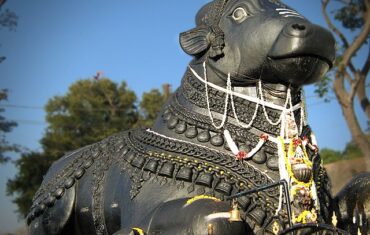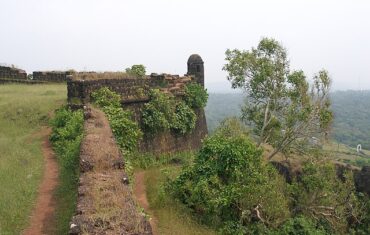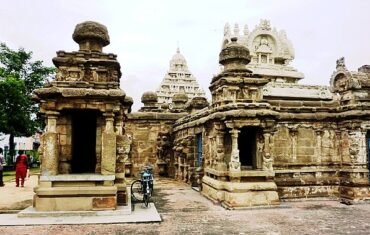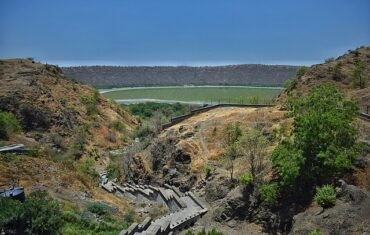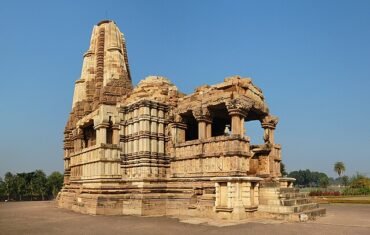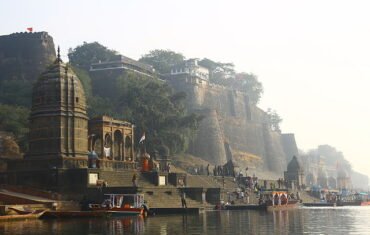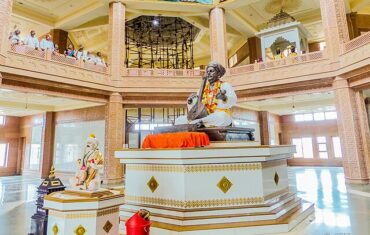Sanchi is a small village in the Raisen district of Madhya Pradesh, India, which is famous for its ancient Buddhist monuments, such as stupas, temples, and monasteries. The Place are among the oldest and most well-preserved examples of Buddhist art and architecture in India, and reflect the development of Buddhism from the 3rd century BCE to the 12th century CE. Visit during One Day Bhopal to Sanchi-Udaigiri Trip
The Great Stupa are also a UNESCO World Heritage Site, and a testimony to the spread and influence of Buddhism in India and beyond. Best 10 Places To Visit in Bhopal
Overview of The Monuments of Sanchi
The monuments of Sanchi are located on a hilltop, overlooking the plain and about 46 km from Bhopal, the capital of Madhya Pradesh. The monuments of Sanchi comprise a group of Buddhist structures, such as stupas, temples, monasteries, and pillars, which were built over a span of more than 1000 years by various dynasties and rulers.
The most prominent and famous monument of Sanchi is the Great Stupa, which was originally commissioned by the Mauryan emperor Ashoka the Great in the 3rd century BCE, and later enlarged and embellished by his successors and other kings. The Great Stupa is a hemispherical dome that contains the relics of the Buddha, and is surrounded by four ornamental gateways (toranas) and a stone railing (vedika) that depict scenes from the life of the Buddha and his previous incarnations.
The Great Stupa is considered as one of the finest examples of Indian stupas, and an icon of Buddhist art and architecture. Besides the Great Stupa, there are several other stupas, temples, monasteries, and pillars in Sanchi, which showcase the diversity and evolution of Buddhist styles and motifs over the centuries. Some of the notable monuments of Sanchi are Stupa 2, Stupa 3, Temple 17, Temple 18, Temple 40, Temple 45, Monastery 51, and the Ashoka Pillar.
Location of The Monuments of Sanchi
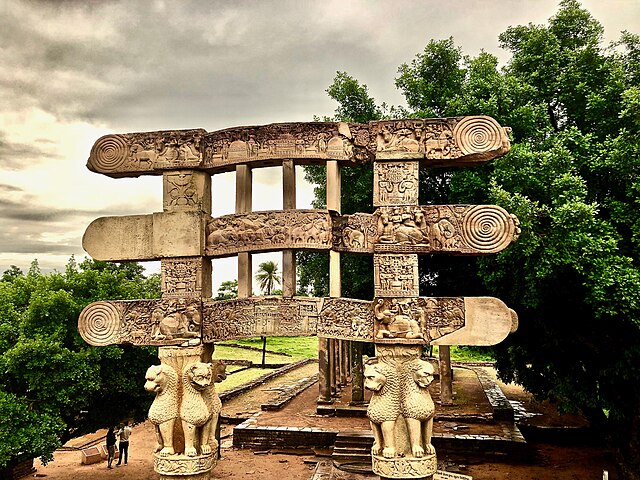
Sanchi is situated on the NH-86, near the town of Vidisha, in the district of Raisen, Madhya Pradesh, India. The monuments of Sanchi are about 46 km from the Bhopal Railway Station and 55 km from the Raja Bhoj Airport. The monuments of Sanchi are easily accessible by public transport, such as buses, taxis, and auto-rickshaws.
Timing/Entry Fees Monuments of Sanchi
The monuments of Sanchi are open to the public from 8:00 am to 5:00 pm, from Tuesday to Sunday. The monuments of Sanchi are closed on Mondays and public holidays. The entry fee for the monuments of Sanchi is Rs. 10 for Indian visitors and Rs. 250 for foreign visitors. There is no entry fee for children below 12 years, students, and senior citizens. There is an additional fee of Rs. 25 for photography and Rs. 50 for videography. The monuments of Sanchi also offer guided tours and audio guides for a nominal charge.
How to Reach Monuments of Sanchi

The Great Stupa can be reached by various modes of transport from different parts of Bhopal and other nearby cities. Some of the options are:
- By Bus: There are several buses that ply to the monuments of Sanchi from various bus stops in Bhopal and other cities, such as Vidisha, Raisen, and Sagar. The nearest bus stop to the monuments of Sanchi is the Sanchi Bus Stop, which is about 500 meters away.
- By Taxi: Taxis are another convenient way to reach the monuments of Sanchi from anywhere in Bhopal and other cities. The fare depends on the distance and the traffic conditions, but it usually ranges from Rs. 500 to Rs. 1000. One can also book a taxi online or through a mobile app, such as Ola, Uber, or Meru.
- By Auto-Rickshaw: Auto-rickshaws are the most common and affordable mode of transport in Bhopal and other cities. They can be hailed from any street corner or stand, and they charge according to the meter or by bargaining. The average fare to the monuments of Sanchi from Bhopal is around Rs. 300 to Rs. 500.
Things to Do Monuments of Sanchi

The monuments of Sanchi are a place where one can experience the history and culture of Buddhism and its impact on Indian art and architecture. There are many things to do and see in and around the monuments of Sanchi, such as:
- Explore the monuments and admire their architecture, design, and decor. See the various stupas, temples, monasteries, and pillars, and learn about their history and significance. Marvel at the sculptures, carvings, and paintings that depict scenes from the life of the Buddha and his previous incarnations, as well as the symbols and motifs of Buddhism.
- Enjoy the view and the nature. Take a walk around the monuments, which offer a panoramic view of the plain and the surrounding landscape. Watch the sunrise and sunset from the hilltop, which is a popular spot for photography and meditation. Relax in the lawns and gaze at the fountains and ponds. Watch the birds and animals that inhabit the area, such as peacocks, monkeys, and deer.
- Visit the museum and the library. The monuments of Sanchi have a museum, which displays some of the relics and artifacts found in the site, such as coins, pottery, inscriptions, seals, and metal objects. The museum also has a section on the history and culture of Bhopal and its people, such as the Begums of Bhopal, the freedom struggle, the art and craft, and the festivals. The monuments of Sanchi also have a library, which has a rare collection of books, manuscripts, and documents on various subjects, such as Buddhism, archeology, history, art, and science.
- Experience the cultural events and activities. The monuments of Sanchi host various cultural events and activities throughout the year, such as exhibitions, seminars, workshops, and cultural performances, to promote the awareness and appreciation of Buddhism and its heritage. The monuments of Sanchi also organize special programs for children, such as quiz, painting, essay, and speech competitions, and educational tours.
Significance of Monuments of Sanchi

The monuments of Sanchi are not only a tourist attraction, but also a symbol of the heritage and identity of India. The monuments of Sanchi represent the vision and mission of Emperor Ashoka, who was the first patron of Buddhism and the founder of the Sanchi Stupa. The monuments of Sanchi also reflect the cultural diversity and harmony of India, which has been influenced by various regions and religions over the centuries. The monuments of Sanchi are a source of pride and inspiration for the people of India, who cherish and preserve their beauty and value.
FAQ’s
Here are some of the frequently asked questions about the monuments of Sanchi:
Q: When were the monuments of Sanchi built?
A: The monuments of Sanchi were built over a span of more than 1000 years, from the 3rd century BCE to the 12th century CE, by various dynasties and rulers, such as the Mauryas, the Sungas, the Satavahanas, the Kushanas, the Guptas, and the Paramaras.
Q: Who is Emperor Ashoka?
A: Emperor Ashoka, also known as Ashoka the Great, was the third emperor of the Mauryan Empire, and one of the most influential rulers in Indian history. He ruled from 268 to 232 BCE, and expanded his empire to cover most of South Asia and parts of Central Asia and Southeast Asia. He is also known for his conversion to Buddhism, and his propagation of the Dhamma (the teachings of the Buddha) throughout his empire and beyond. He is also credited with the construction of the Sanchi Stupa and the Ashoka Pillar, as well as many other edicts and monuments.
Q: What is a stupa?
A: A stupa is a hemispherical dome that contains the relics of the Buddha or his followers, and is a symbol of the enlightened mind. A stupa is also a place of worship and meditation for Buddhists, and is surrounded by various structures, such as gateways, railings, umbrellas, and spires, that represent the elements of the universe and the path to enlightenment.
Q: What are the main attractions of the monuments of Sanchi?
A: The main attractions of the monuments of Sanchi are the Great Stupa, which is the oldest and largest stupa in India, and the four ornamental gateways, which are the finest examples of Buddhist art and sculpture. Other attractions include the other stupas, temples, monasteries, and pillars, which showcase the diversity and evolution of Buddhist styles and motifs over the centuries.
Q: What is the timing and entry fee of the monuments of Sanchi?
A: The monuments of Sanchi are open to the public from 8:00 am to 5:00 pm, from Tuesday to Sunday. The monuments of Sanchi are closed on Mondays and public holidays. The entry fee for the monuments of Sanchi is Rs. 10 for Indian visitors and Rs. 250 for foreign visitors. There is no entry fee for children below 12 years, students, and senior citizens. There is an additional fee of Rs. 25 for photography and Rs. 50 for videography.
Conclusion
The monuments of Sanchi are a must-see destination for anyone who visits Sanchi and its surroundings. It is a place where one can witness the history and culture of Buddhism and its impact on Indian art and architecture. It is a place where one can learn about the vision and mission of Emperor Ashoka and his contribution to Buddhism and its propagation. It is a place where one can enjoy the view and the nature of the hilltop and the plain. It is a place where one can visit the museum and the library, and explore the relics and artifacts of Sanchi and its vicinity. The monuments of Sanchi are a place that offers something for everyone, and leaves a lasting impression on the visitors.

